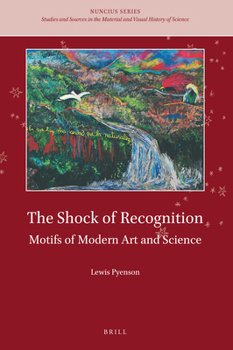The Shock of Recognition: Motifs of Modern Art and Science
In The Shock of Recognition, Lewis Pyenson uses a method called Historical Complementarity to identify the motif of non-figurative abstraction in modern art and science. He identifies the motif in Picasso's and Einstein's educational environments. He shows how this motif in domestic furnishing and in urban lighting set the stage for Picasso's and Einstein's professional success before 1914. He applies his method to intellectual life in Argentina, using it to address that nation's focus on an inventory of the natural world until the 1940s, its adoption of non-figurative art and nuclear physics in the middle of the twentieth century, and attention to landscape painting and the wonder of nature at the end of the century.
Format:Hardcover
Language:English
ISBN:9004325727
ISBN13:9789004325722
Release Date:December 2020
Publisher:Brill
Length:668 Pages
Customer Reviews
0 rating





